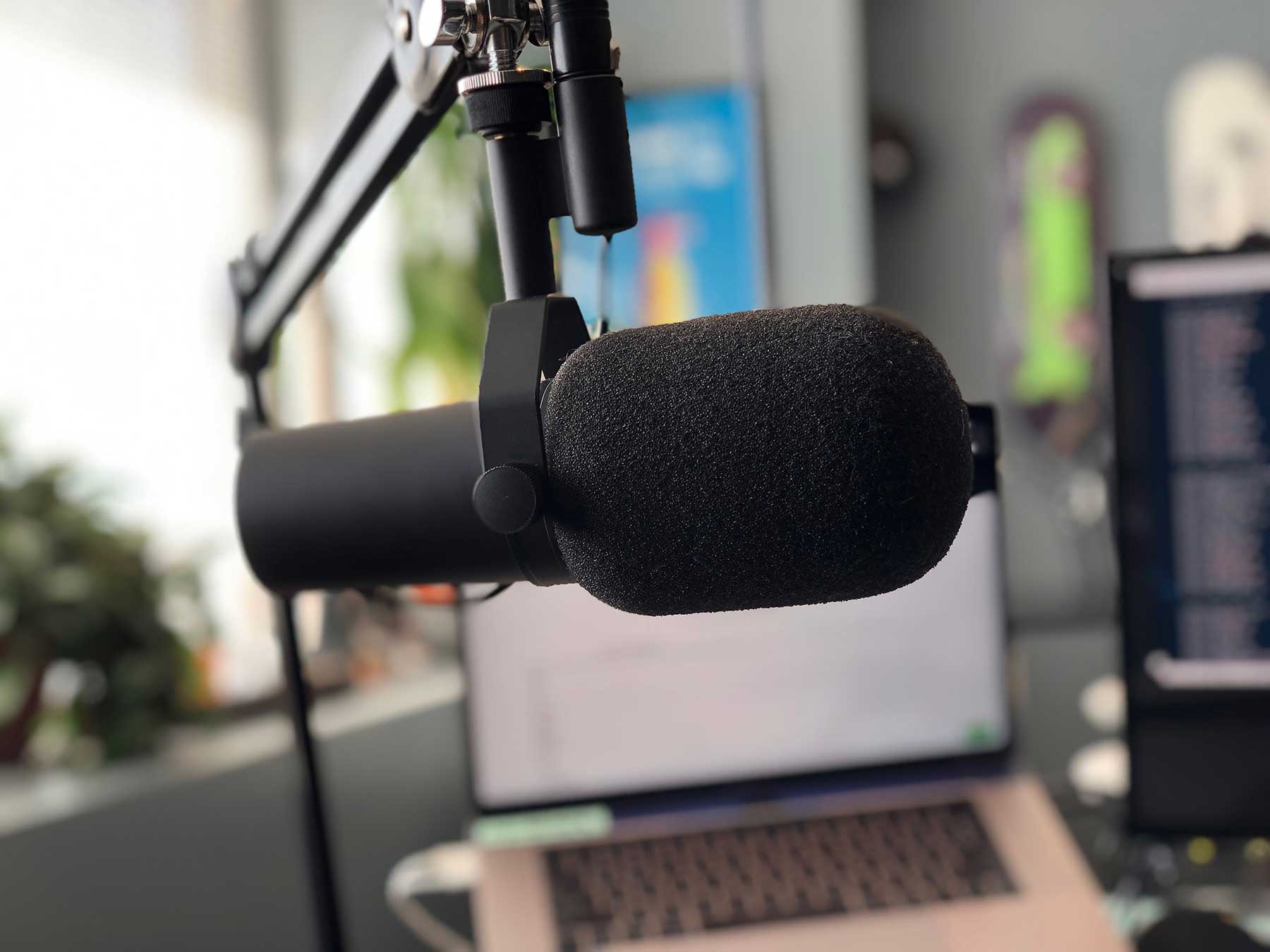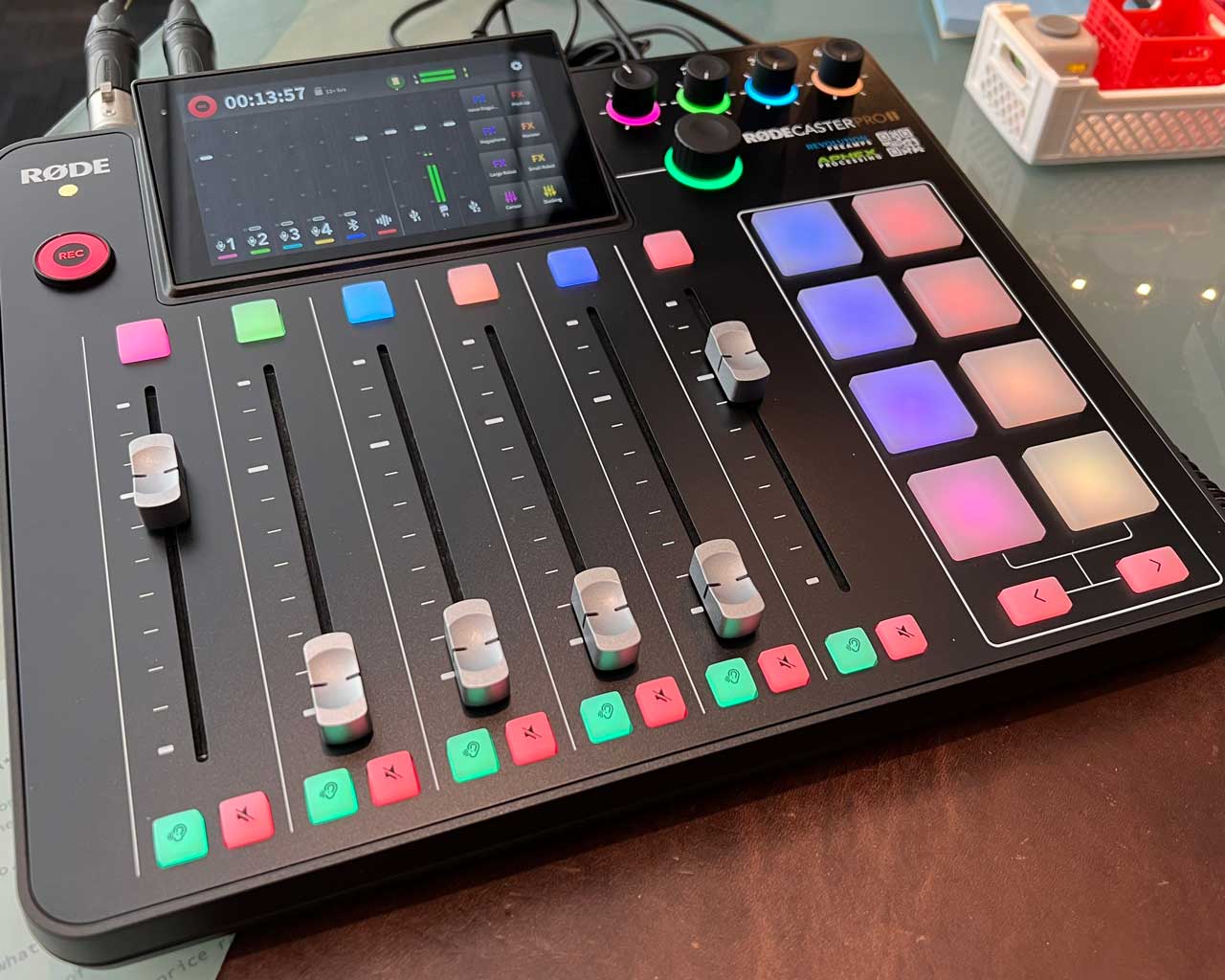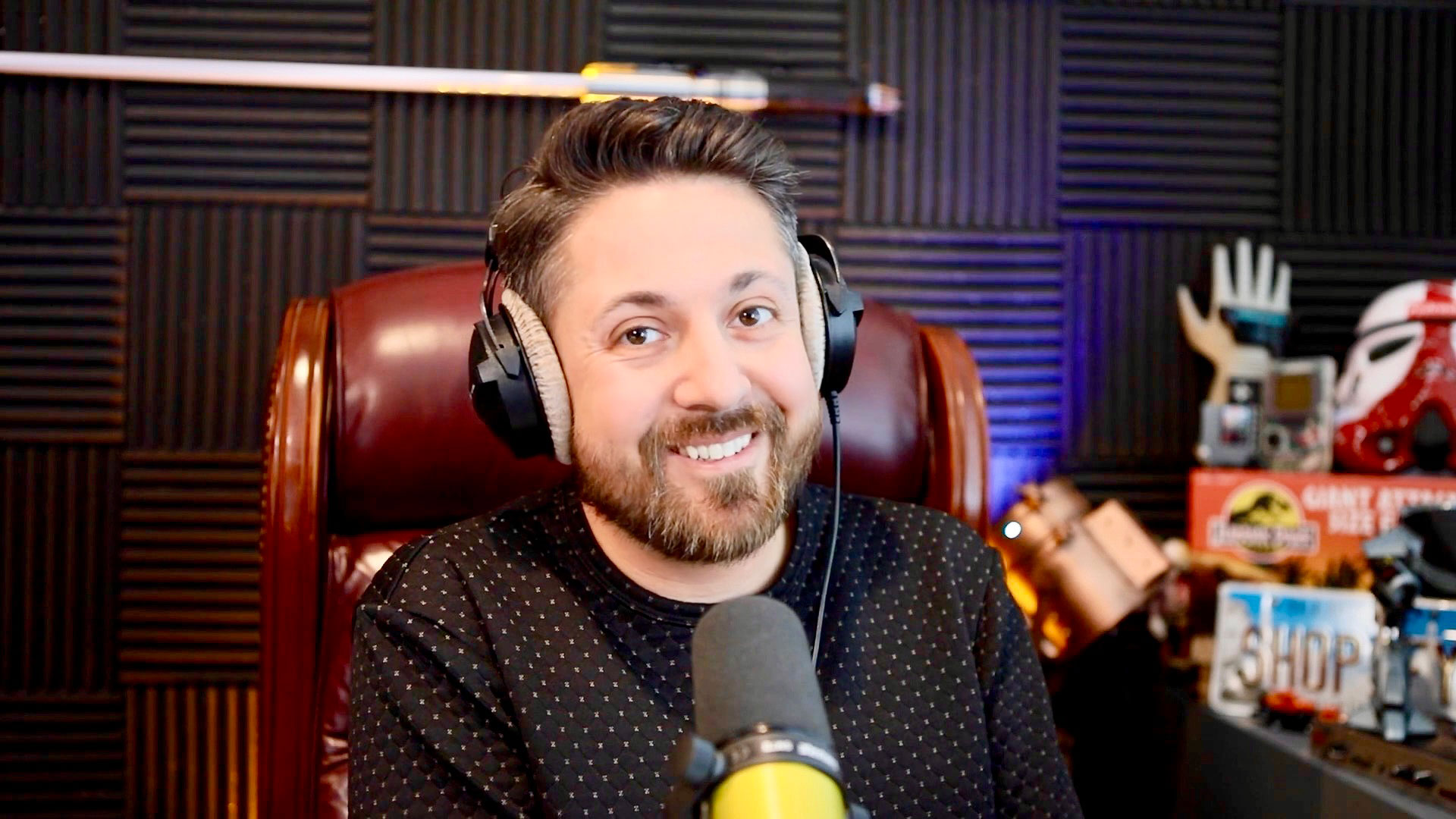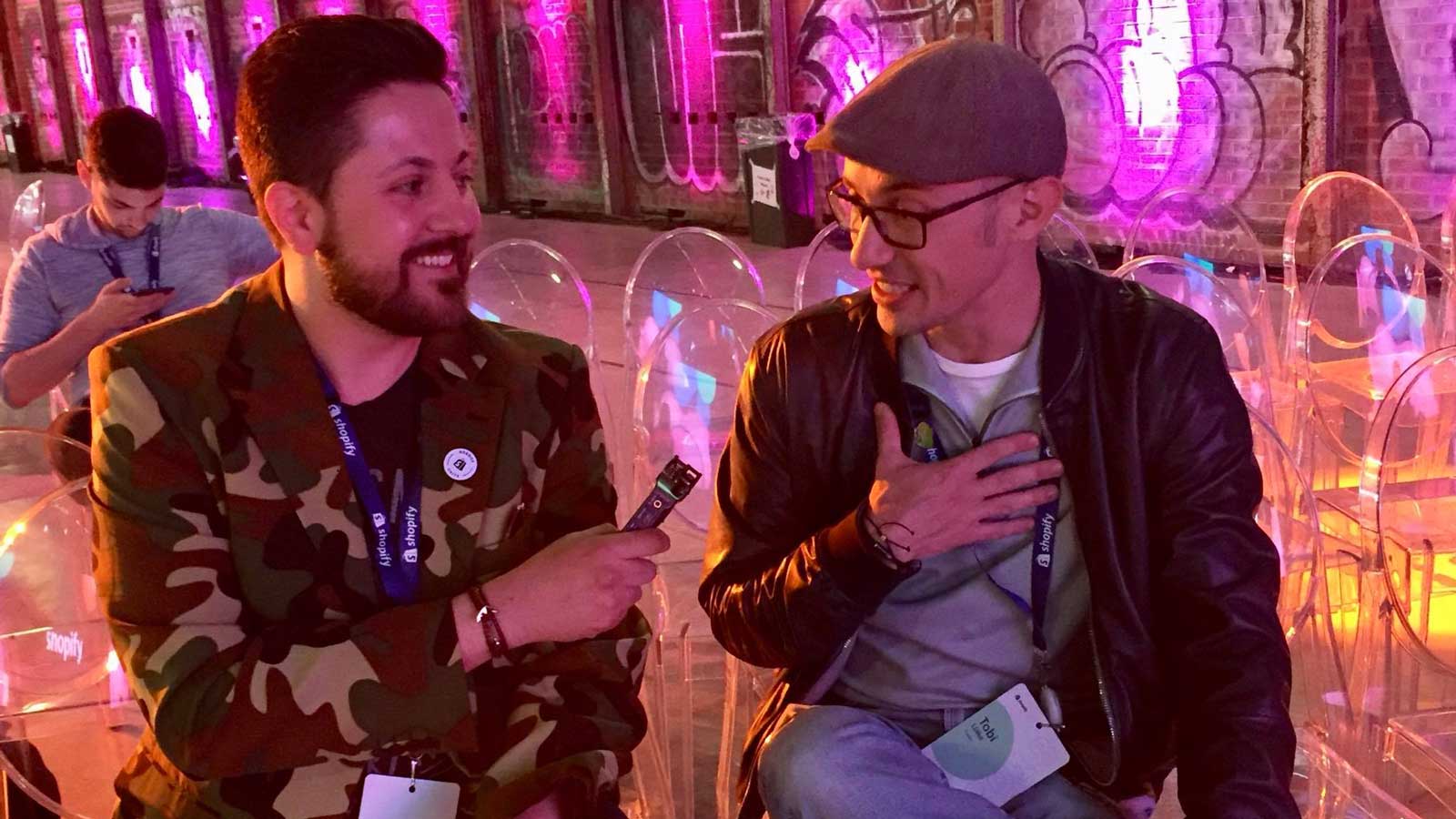Kurt’s 2025 Pro Podcasting Gear Guide
Disclaimer: This page contains Amazon affiliate links, I may get commissions for purchases made through links in this post.
Last updated: February 23rd 2024.
In a nutshell: For excellent quality and user-friendliness that will satisfy nearly all users, consider investing in a high-quality dynamic microphone such as the Shure MV7, along with a sturdy microphone arm like the Rode PSA1+. Its perfect for conference calls, podcasts, and streaming. For upgrades and advice, read on.
On this page:
A Gear Journey
When it comes to podcasting, your content will always be more important to your success than your gear, but good gear doesn’t hurt, and lousy sound quality doesn’t help. So why not use some of the best gear available to your budget?
As our show has evolved and improved over the years, so has the gear we use to record. When we started our show back in 2014, we were using a humble $40 travel mic.
As years passed and our quality improved, so did equipment; from dbx 286s and Focusrite Scarlett 2i2 to what now powers us - Rodecaster Pro II. It's all part of an ever-evolving journey that continues today.
Mic: Shure SM7B

I love this mic. The SM7 series has quite the legacy. Micheal Jackson used it to record Thriller, Robin Quivers uses one on the Howard Stern show, and Joe Rogan uses them on his podcast. It has that sought-after rich, warm tone that makes it works so well for voice work. It’s not particularly sensitive so it cuts out a substantial amount of room noise.
The downside is this mic requires a lot of gain. It’s not USB, it’s a proper studio equipment and uses XLR cables. To get the best result, you’ll need a pre-amp that can provide +59db of clean gain. Worth it.
Cheaper alternatives: In our home office, we used the venerable Shure SM58 for years. The new Shure MV7 is also worth a look as an SM7B alternative that supports USB and XLR. If you want a budget-friendly all-in-one solution that still sounds good, there's always the Blue Yeti that has launched many podcasts.
Mixer: RØDECaster Pro II

For our home studio, we picked up a Rodecaster Pro in 2019. It does quite a lot, it’s a mixer, interface, processor, pre-amp, and soundboard.
After setting it up for my wife’s show, I knew it’s easy to use, and packed a lot of value, but I wasn't ready to abandon my more traditional recording gear just yet. Then in 2020, I was forced into working from home and fell in love with the Rodecaster, and ultimately bought one for our office studio. You could say I liked the Rodecaster Pro so much I bought it twice.
My only criticism of the Rodecaster Pro is that it can have a high noise floor when run hard with a gain-hungry mic like the SM7B. To mitigate the issue, I now run our dynamic mics with in-line pre-amps.
If you research the use of in-line mic pre-amps with the SM7B, you’ll find it isn’t necessity, but personal preference. Like asking “which brand of motor oil should I use?” or “which Star Wars movie is the best one?”, you’ll find many opinionated answers.
Pro I or Pro II?
In 2023, I upgraded to a RØDECaster Pro II.
I fell in love with the original over the pandemic. The Pro II is a refined version of the same thing. Smaller footprint, better controls, lower noise, better processing, etc. Worth the upgrade for me.
The gen1’s a great value now on eBay too. (I sold mine for ~$350.)

Cables & Accessories
Mic Arm: Rode PSA1+ — If you're looking for a mic arm that won't leave you feeling stiff and squeaky, forget about going the cheap route. Invest in quality with Rode's PSA1+— an updated version of its popular studio-standard model used by professionals since 2003. The PSA1+ is the perfect compromise between quality and cost.
No matter which arm you pick, the SM7B is a bulky mic, so consider getting the Shure A26X 3" Extension Tube to get better clearance and keep the stand out of the frame on video.
Room Treatment: The room you record in will have a massive impact on your sound, and no amount of expensive gear or post-processing can completely fix a noisy, echoey room. Start by finding a tranquil place to record - not near any loud noises or distracting echoes. Then, add soft furnishings like pillows and curtains to reduce room noise right off the bat. Still have a lively echo-filled room? Try acoustic treatments.
Pro-tip when installing acoustic foam: let them expand overnight before you mount them. Otherwise you'll mount them, they'll expand, and go crooked on you. Use 3M 90 Spray Adhesive to mount and they'll never fall off. Or if you want your security deposit back, Use 3M strips instead of spray adhesive when mounting these babies in their new happy home-studio.
XLR Cables: Mogami Gold - If you want to avoid any cable-related anxiety, go big and splurge on the pricey Mogami options. But if your budget is a bit tight – no sweat! Seismic Audio offers affordable solutions that work just as well. Monoprice has reliable cables too. There are endless cable options, get creative with the cables without sacrificing quality or getting into an argument with your wallet!

Software & Services
Hosting: Simplecast
As the name implies, it's a simple all-in-one solution to hosting podcasts.
Editing & Recording: Audacity
Open source & widely supported. Alternatively, you could use GarageBand. We stick with Audacity. Lots of tutorials and plugins available.
Remote Recording: Riverside.fm
Other similar solutions had issues with drift, post processing, or ease of use. Riverside is best-in-class.
Secret Weapon: Adobe Enhance
If you podcast long enough, you'll eventually run into a situation where you want to use audio that has issues with levels, echo, or noise. Too quiet, too mismatched, or too inconsistent. When re-recording isn't an option, and you're not an audio engineer, the free Enhance tool from Adobe is an opinionated sledgehammer of an AI that will fix even the most wildly inconsistent recording just by dragging & dropping.
Music & SFX: Soundstripe
Mobile Recording

When recording podcasts at events like Shopify Unite, Klaviyo:BOS, or even Disney World, I keep it simple.
In the past, for quick “lightning interviews” of around five minutes, I used to carry a Zoom H1n handheld recorder with a foam windscreen on top to make it visually obvious that it’s a microphone. For the price, you can’t beat it.
Today, I'm going even simpler. You can't do better than the phone in your pocket. Modern smartphones are perfectly tuned to recording speech in noise environments. No need for an external microphone or any special equipment to record, just an app. On iOS, I like Voice Record Pro because it lets me fiddle with settings like sample and bit rates.
The Zoom H1n still gets use though. I've paired it with a lav mic to mic myself during live events like panels.
Have questions?
Follow @kurtinc on Twitter and ask.